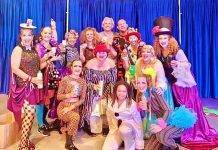By Emilio Kalmera,
In my lectures and classes so far, some persons have a hard time understanding how credit money is created out of nothing and how this credit creation process creates economic cycles. For this emancipation weekend, I thought I would give some insights on this by using laymen illustrations.
Johann Wolfgang von Goethe is quoted as saying: “None are more hopelessly enslaved than those who falsely believe they are free.” Let us begin to explore what this means in part 1 of this article.
Money + Credit in the economy influences spending. Money and credit are not the same but they both can be used in the same way to purchase goods and services in the economy. The use of the word money is tricky because the evolution of money from barter, commodity, symbolic, credit, to credit clearing has resulted today that all money is now really credit as money is no longer backed by gold or silver. But for the sake of simplicity, let us refer to money as physical money in the form of bank notes and coins. About only 3% to 5% of the money supply in developed countries are said to be in the physical form. The remainder is in digital form.
Prior to modern technology, people got paid cash for doing work or a job. So the more productive you were the more physical money you could make. The introduction of credit allows the receiver of it to also spend in the economy without necessarily having to be productive. And one person’s (or institution’s) spending is another person’s (or institution’s) income. Back in the primitive days, villagers issued credit among each other but the credit was short-term based. Meaning, credit creation and credit redemption occurred within one year. Think of a bar tab, sewing tab, fish tab, etc., in a small village. So in essence, credit was issued on a short-term bases and also issued by the individuals or businesses themselves without having to use credit from a third party (credit card, bank, etc). This is critical to understand before reading further.
Since Money + Credit influences spending, and money usually comes about by productivity, which takes time, improperly issued bank credit has more influence on spending than money. Money usually comes about from hard work whereas improperly issued bank credit does not necessarily have to come about from hard work. Now, total spending divided by the quantity of goods and services sold in the economy equals the average price of goods and services in the economy. And again, Money + Credit = Total Spending.
When a bank issues credit to someone to purchase a television, a car, furniture, a home, etc., for personal use, using the logic of primitive times as mentioned earlier, this credit should ideally be for short-term, say maximum one year. Why? Loans for such purchases are not productive credit in that when such credit is issued, it does not increase the borrowers’ productivity, which allows for timely redemption of credit. An aviation analogy to explain this is the pressurization system in an airliner. Air is ducted from the compressor part of the turbine engine into the cabin and the pressure of this air is controlled by opening and closing valves at the back of the aircraft. This balancing act is critical for proper breathing and thus a certain tolerance of pressure balance must be maintained. This analogy also applies to the concept of credit.
Credit has an issuance phase and a redemption phase. And through research, credit must be issued properly into the economy to insure that the proper rate of redemption occurs. If not, total spending will increase more from a function of credit, not money, which increases total spending and incomes (one person’s spending is another person’s income), and with no similar rate of increase in the production of goods and services, will cause the average price of goods and services to rise as total spending is divided by fewer quantity of goods and services. Here is where the concept of Good Debt and Bad Debt from Robert Kiyosaki comes in.
Credit that allows productivity to increase, which will allow for the proper rate of redemption of money, can be created and allowed for a duration of more than one year. Any credit that doesn’t allow productivity to increase in the future should either be for a maximum of one year. If this is not possible, existing money should be used. Now what is meant by existing money if someone needs to borrow money? Let us say your friend comes to you to borrow $100 dollars you have saved up. You have your last $100 dollars in your pocket and decide to lend him $100. When you lend your friend $100 you do not have it anymore to spend. So only $100 can be spent in this case.
Let us assume now that you were given money creation power like commercial banks and when this same friend comes to borrow $100, you keep the $100 but gave him a credit card that has a $90 limit on it. This means that your $100 in your pocket can be used to buy goods and services while the credit card you lent your friend can also be used to buy $90 in goods and services. So instead of there being $100 in circulation to spend, there is actually $190 (Money + credit). But what if there was only $90 worth of quantity of goods and services in the economy? With $190 chasing only $90 in quantity, this has the potential to bid up prices. For example if my friend wants to buy the $90 in quantity of goods but I wanted to also, I can bid $100 for this quantity whereas my friend has only $90. As simple as this example is, it has profound consequences given bankers’ notion that less risky and high net worth individuals can be given more credit than others. This bankers’ policy, albeit understandable from a banking business perspective, actually helps compound the income and wealth inequality problem.
Why is above so important to understand? Because in the case of commercial banks, besides being able to reshuffle existing money (your savings), they can also create new money (credit) out of nothing. In the Federal Reserve Modern Mechanics Booklet it states: “Control of the quantity of money is essential if its value is to be kept stable.” Money’s real value can be measured only in terms of what it will buy. Therefore, its value varies inversely with the general level of prices. Assuming a constant rate of use, if the volume of money grows more rapidly than the rate at which the output of real goods and services increases, prices will rise.
This will happen because there will be more money than there will be goods and services to spend it on at prevailing prices. But if, on the other hand, growth in the supply of money does not keep pace with the economy’s current production, then prices will fall, the nations’ labor force, factories, and other production facilities will not be fully employed, or both. Stay tuned for part 2.





























